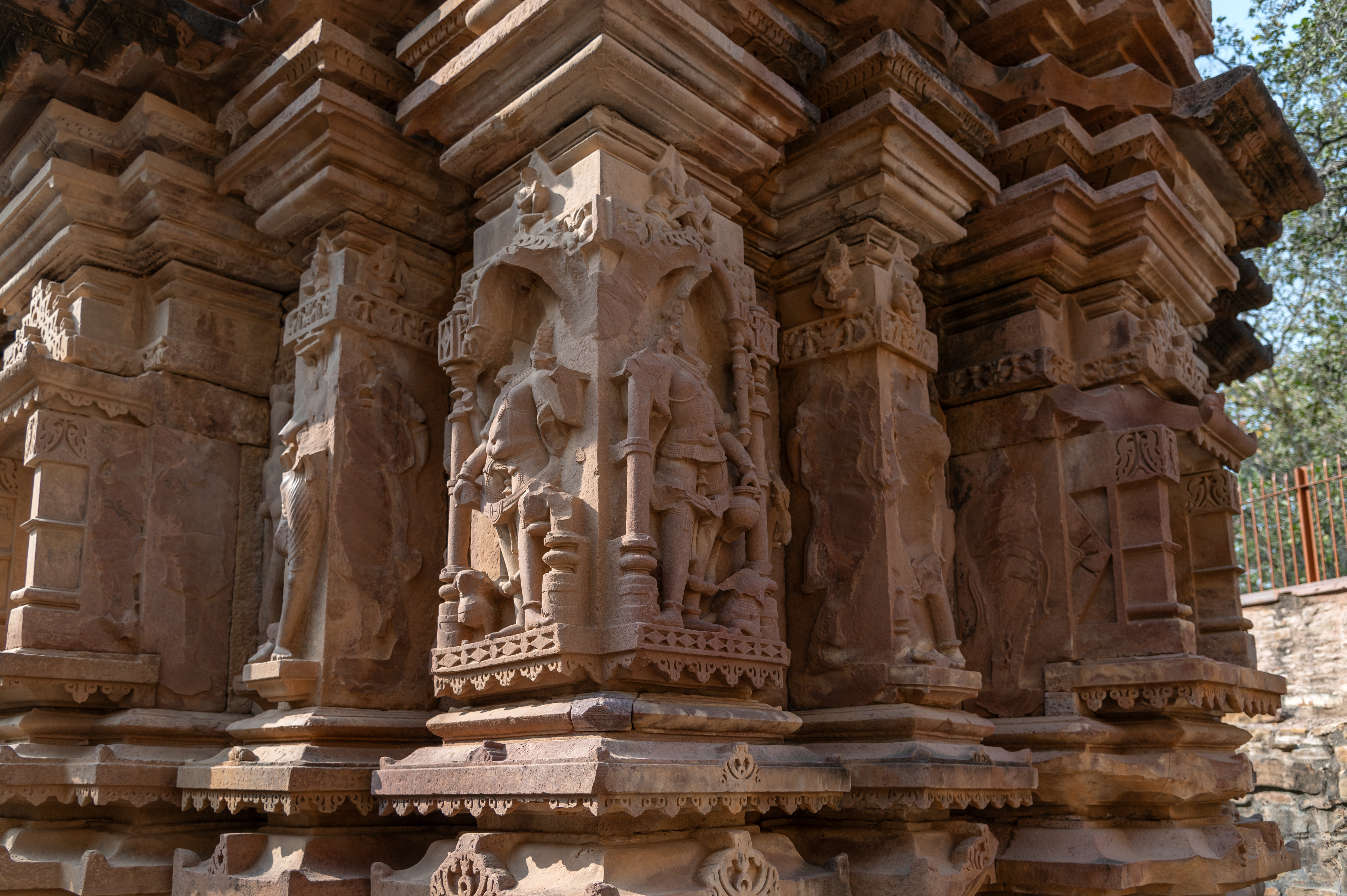Kaner-ki-Putli Temple
Bhilwara, Rajasthan

The Kaner-ki-Putli is a Shiva temple located in the picturesque Khadirpur locality of Bijolia, Rajasthan. The protected heritage site under the Jaipur Circle of the Archaeological Survey of India (ASI), preserves its cultural legacy in the wild within the Vindhya ranges. The secluded temple is surrounded by Bijolia stone mines all around it. The temple is oriented towards the west and its current structure includes a garbhagriha (sanctum sanctorum) and an antarala (antechamber), while the mandapa (pillared hall) lies in ruins. The temple features intricate vedibandha (basal mouldings) and a finely carved jangha (wall), characteristic of the 12th century CE architectural style. Despite significant damage, particularly to its upper shikhara (superstructure), the temple was meticulously restored by the Archaeological Survey of India (ASI) and some of its architectural and sculptural elements are kept in the storehouse of in the premises of Mahanal Shiva Temple and Math, another historical temple complex protected under the Jodhpur Circle, ASI.
This module includes an overview article on the Bhumija architecture of the temple, highlighting its doorframes and sculpted deities. Additionally, the module features a photo essay focusing on two distinct sculptural themes on the temple’s external walls. The first theme showcases Shaiva ascetics, reflecting the temple’s dedication to Pashupata Shaivism, while the second theme highlights the sculptures of surasundaris (celestial damsels). This striking contrast invites contemplation on the two concepts as the ascetics symbolising spirituality and the surasundaris embody sensuality and the idea of pleasure.
An image gallery further showcases the temple’s art and architecture, emphasizing the distinctive Bhumija architecture of this Shaiva temple. Its secluded location, adding to the gap in scholarly intervention and archival materials has made it elusive to the public, making this visual journey particularly meaningful. The module also includes architectural drawings of the temple.